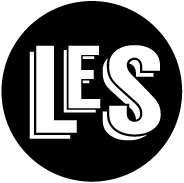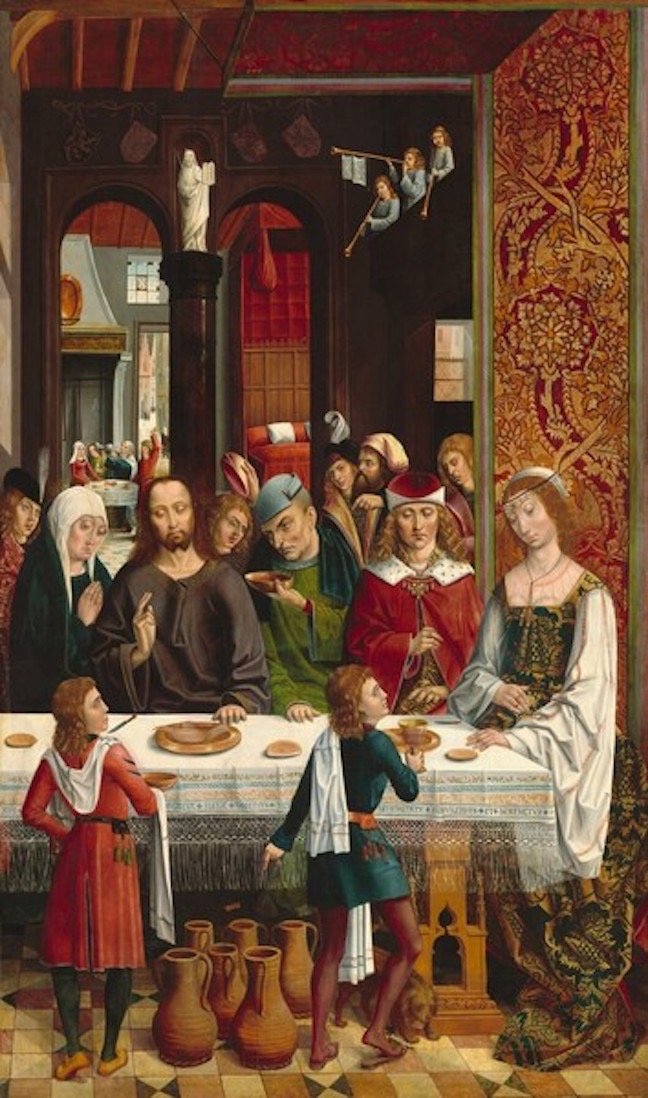In truth I posted the first verse once before, but then I wrote two more on the same pattern in order to put them all together. I always knew the subject of the third one, but I could never get it to work in the least little bit, until now. I think it’s all right to find the second one humorous; I find it humorous and extremely serious too, of course. Each of the three verses relies on things that we know but that aren’t spelled out in the verse. We all know the consequence of Pilate’s decision, for example; we all know who Judas is and what he did shortly after the meal; and we all know what Jesus did at Cana. The image or painting below suggests a rather solemn occasion, which I find hard to believe unless Jesus and Mary are just being informed about the wine problem, and that Jesus’ joy had not yet manifested itself here. The meaning of the painting in some sense hinges on how we understand the man who is bending toward Jesus holding what looks like a bowl. I assume that he is the “chief steward”; I just can’t decide whether it’s before or after, though his face seems to suggest before. There’s a kind of pinched look there perhaps. I thought “The Chosen” did a nice presentation of this episode in Jesus’ life.
Truth
“What is truth?” quipped jesting Pilate;
All the Roman boys looked grim.
The Jewish boys glanced all around;
One pointed and said, “Him.”
Passover
“This is my body, this my blood,”
Said Jesus on that darksome night.
“That’ll be the day,” whispered Judas;
“Sometimes I think He’s not too bright!”
Cana: “Woman!”
Mary laughed and looked Him in the eye;
She was her love bestowing.
“Do whatever He tells you,” said she,
“For His joy is overflowing.”
In the second chapter of the gospel of John, it looks that Jesus is trying to stop his mother’s intervention: “My hour is not yet come.” She however barrels right on, and of course Jesus follows through accordingly. That his hour is now come as a consequence of this somewhat public miracle means the “sword” for Mary and the cross for Jesus! He might well want to delay the beginning unless of course he is playing with her Jewish motherliness, a behavior which she might well understand. Actually, having looked at the image yet again, Jesus, it seems, is in the act of performing the miracle and manifesting “his glory.” Often I find that being slow and a bit dense is a real handicap, but sometimes it even might be a virtue. Curiouser and curiouser. les
The passage in John 2: 1-12 is well worth reading again:
1 On the third day there was a wedding in Cana of Galilee, and the mother of Jesus was there. 2 Jesus and his disciples had also been invited to the wedding. 3 When the wine gave out, the mother of Jesus said to him, “They have no wine.” 4 And Jesus said to her, “Woman, what concern is that to you and to me? My hour has not yet come.” 5 His mother said to the servants, “Do whatever he tells you.” 6 Now standing there were six stone water jars for the Jewish rites of purification, each holding twenty or thirty gallons. 7 Jesus said to them, “Fill the jars with water.” And they filled them up to the brim. 8 He said to them, “Now draw some out, and take it to the chief steward.” So they took it. 9 When the steward tasted the water that had become wine, and did not know where it came from (though the servants who had drawn the water knew), the steward called the bridegroom 10 and said to him, “Everyone serves the good wine first, and then the inferior wine after the guests have become drunk. But you have kept the good wine until now.” 11 Jesus did this, the first of his signs, in Cana of Galilee, and revealed his glory; and his disciples believed in him.
12 After this he went down to Capernaum with his mother, his brothers, and his disciples; and they remained there a few days. (NRSV)
Image: The Marriage at Cana by Master of the Catholic Kings, c. 1495/1497 [The MET, New York]. [Not quite a happy occasion yet, since it looks as though the jugs are all empty. Or maybe not.]

